|
Author Archives: dpulley1
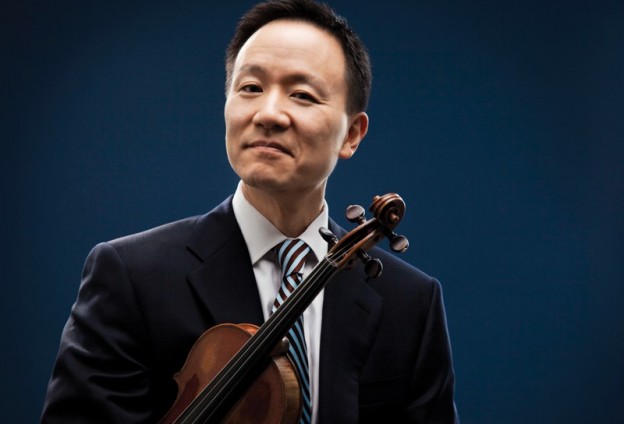
The Swarthmore College Orchestra and David Kim
This fall’s Swarthmore College Orchestra concert will be one for the books. Each semester, the orchestra graces the community with a culminating musical performance as a result of their many rehearsals and efforts, but rarely is the orchestra joined by such musical greatness as in this upcoming concert, featuring David Kim as guest violinist. David Kim has studied violin from the age of three, receiving his bachelor’s and master’s degrees from Juilliard School, and is now the concertmaster for the Philadelphia Orchestra. He has received accolades from the International Tchaikovsky Competition in Moscow, and will perform with the Swarthmore Orchestra in Tchaikovsky’s Violin Concerto.
The Swarthmore Department of Music and Dance has a long relationship with David Kim, who has previously given solo recitals and master classes at the college. Kim will also return to the college in the spring to play a Bach Concerto alongside the Swarthmore Lab Orchestra and lead a violin master class. He last performed with the Orchestra in 2013, so current students will now have the opportunity to hear him for the first time. Andrew Hauze, conductor of the Swarthmore College Orchestra, remembers his last concert with high regards. “Those of us involved will never forget the power and beauty of that performance,” says Hauze. “It is such a great experience for our students to get to play alongside one of the greatest violinists playing today. Our students always give intensely committed and exciting performances, and the energy will be even higher with our collaboration with David Kim.”
In addition to the featured Tchaikovsky Concerto, this semester’s set list includes two pieces from English operas: the overture to The Wreckers and “The Walk to the Paradise Garden” from A Village Romeo and Juliet. Both songs are rarely performed; Hauze had to obtain the score for The Wreckers from a UK library, which he newly engraved for future orchestral performances. However, Hauze considers his efforts worth the reward of exposing the community to such music. “I am especially excited that we are playing the overture,” he says. “The music is magnificent, with lush harmonies, striking themes, and wonderfully colorful orchestration.” The program features Romantic themes and, Hauze notes, should please anyone who enjoys beautiful, sweeping orchestral sounds. “To get to hear such moving music in such an intimate space should be a real treat for our audience.”
The Swarthmore College Orchestra’s fall concert, featuring David Kim, will be held on November 12th at 7:30 PM in Lang Concert Hall. This event is free and open to the public. For more information, visit https://www.swarthmore.edu/music/concerts-events.
Maya Kikuchi ’20
Josh Mundinger ’18 Profile and Senior Recital
At his senior recital on Nov. 3 in Lang Concert Hall, music and honors mathematics major Josh Mundinger ’18 will perform selections of Bach’s 24 preludes and fugues (The Well-Tempered Clavier), Shostakovich’s Opus 87 from his 24 preludes, and Chopin’s B Minor Sonata. He has played the piano since he was six years old, yet his most enthusiastic comments concerned music theory and its mathematical elements.
“If I were to continue music academically, it would probably be in theory, especially because I would try to connect that to my interest in math as well,” he said. “Jon Kochavi, I have him now in a seminar in music theory and that’s been really enjoyable. It, for one [thing], touches on these mathematical connections, and we’ve been getting into weird music, and that’s something I really enjoy.”
Mundinger’s love for music theory animated his speech and actions as he described Chopin’s exploratory B Minor Sonata. “There’s these small little melodic fragments that are constantly trading off and appearing and disappearing and they slide together in really interesting ways,” he said, emphatically moving his hands in waves as he visualized the different melodic lines, harmonic shifts and textures all simultaneously present in the piece.
Mundinger first heard the sonata performed by professional pianist Ilya Poletaev at Swarthmore and the crescendo of the piece convinced him to study it. “The moment that really made me sit up in my seat was this chromatic scale setting in the bass,” he said, raising his arms and stretching them wider and wider to represent the range of the scale. “The bass line has this chromatic scale that goes up the piano and is crescendoing and the tension just builds and builds and builds.”
He values exploration of music so much that he dared to go against Beethoven lovers when he was younger. “I said I didn’t like Beethoven and I’m not really sure why,” he said. “Maybe it’s just because I didn’t want to accept what other people told me was good.” Despite his former disdain for Beethoven’s music, he has found that his study of the composer in high school and at Swarthmore have made Beethoven into a formative influence on him. “Music 13 and 14–in that class, I learned a lot about the music of Chopin and Beethoven and these Romantic composers that have been that cornerstone of my piano music made a huge impact on how I approach that repertoire,” he said.
For the 16 years he has been playing piano, Mundinger has preserved his passion for music and music theory by tackling new composers, new techniques and new forms of music, from Chopin’s études to the “weird music” he studies in his music theory seminar, because they inspire him to push his skills further and get into the “nitty-gritty” of the music.
At 12, he learned the oboe. He performed new piano pieces he had learned for the prelude, postlude, and offering of the Lutheran church his family attended in his hometown of Boulder, CO, and even worked on learning the organ around age 16.
He has played chamber music since he was a freshman, at first in a piano trio with Noah Rosen ’18 and Jasmine Sun ’18, then in a quartet when violist Ayaka Yorihiro ’20 joined. And during his semester in Budapest junior year, he continued to play solo piano.
“I think for me a lot of [my interest] comes from renewing the type of music I’m listening to, renewing the styles that I’m playing, not just settling for the same composers,” he said. “Eventually you stop growing and…you get all you can from a particular genre, a particular composer, a particular set.”
After leaving Swarthmore, Mundinger will continue to play solo piano. Mundinger also plans to pursue a Ph.D in mathematics. He feels he will miss fellow music majors and their respect for musical exploration and individual taste.
“Everyone has a deep respect for each other’s music-making. Everyone has different aesthetics [and] different ideas about what music is good and yet we’re able to talk to each other and our friends, so that’s something I really enjoy about this particular community.”
Bayliss Wagner ’21
Swarthmore Students Embrace Challenge of Summer Intensives
Summer intensives are somewhat of a rite of passage for dance students. Spanning several weeks and taking place at nearly dance school and company around the country, intensives are designed to be just that: intense. Sometimes dancing for 10 hours/day, students take classes in a variety of techniques and styles, from classical ballet to jazz, hip-hop, and flamenco. This past summer, Marion Kudla ‘19 and Sophie Gray-Gaillard ‘20 each attended summer intensives. Their experiences both prove the value of these kinds of programs and reaffirm their demanding structure.
Kudla attended the BalletX summer intensive in Philadelphia for two weeks. BalletX is a contemporary ballet company that “encourages formal experimentation while preserving rigorous technique.” They have performed at Swarthmore several times, and Kudla says they influenced her dancing even before she attended the summer program. Citing a performance from her freshman year, she says, “it was this performance that helped me recognize the far-reaching ways that dance and movement can impact our lives.” The intensive reaffirmed this notion for her, and has inspired her to immerse herself fully in Swarthmore’s dance program during her last two years at school. One of the benefits of attending a summer program with a company rather than at a school is the unique proximity to professional dancers. Kudla talks about watching the company in rehearsal, and the rare sense of intimacy that comes from seeing the dancers off stage. “Somehow, the choreography they were rehearsing took on a completely new form when seen up close and out of costume. The personality of each dancer became all the more apparent, emphasizing the company’s diverse artistry and making me appreciate the individuality integrated into contemporary choreography.”
Sophie Gray-Gaillard spent three weeks at the Cambrians summer intensive in Chicago. The Cambrians are a unique force in the world of contemporary ballet. Their pieces are made through collaborations with several choreographers. Each choreographer will make a piece of the dance, and then the Cambrians will “remix” it, using only the steps that they have been given to create a completely new work. Gray-Gaillard took classes in flying low, a technique that “emphasizes the dancer’s relationship with the floor,” improvisation, cuban technique, and modern technique. She also had to remix her own dances. The Cambrians dancers would give students pieces of dance and stipulate them with “movement tasks.” Gray-Gaillard describes one of these tasks: “My partner and I were assigned a task where we had to take a phrase that was a remix of three other phrases and perform it with our hips never being more than a few inches apart. On top of that, we had to perform it at a super slow speed.” This kind of intellectual challenge is not necessarily typical for all summer intensives, and the Cambrians’ use of this creative pedagogical technique furthers the idea that they, and companies like them, are disrupting the world of contemporary ballet with foundational innovation.
Swarthmore dance professor Olivia Sabee believes that this kind of summer dance study is incredibly important for many reasons: “Beyond simply providing the opportunity to continue to dance over the summer, pre-professional summer dance programs are a critically important way for our choreography and performance-focused students to get exposure to techniques and styles beyond those offered here at Swarthmore. The varied repertory experiences—whether focused on existing or new work—these programs provide also help shape the voices of emerging choreographers by allowing them to experience these works firsthand.”
Gabriel Hearn-Desautels ’20
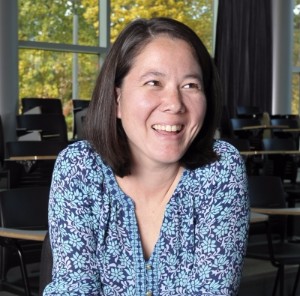
A Profile of Professor Lei Ouyang Bryant
Swarthmore Music Department’s newest faculty member, Professor Lei Ouyang Bryant, is no stranger to small liberal arts colleges—this is her fourteenth year of teaching at one. However, her experiences as both a teacher and musician stretch far beyond that scope. As an ethnomusicologist specializing in East Asia and Asian America, she has also traveled to California, Ethiopia, and Taiwan to teach piano, violin, music, English, and dance to age groups spanning preschool to adult.
Professor Bryant’s musical background is as diverse and extensive as her teaching experiences. She studied violin, piano, and ballet throughout childhood and college, and learned Chinese music and dance growing up in her local Chinese American community in Minnesota. She also took up Taiko drumming during a semester abroad in Japan. After her undergraduate studies, she spent two years traveling and teaching, which deepened her interests in ethnomusicology. Says Professor Bryant, “I examine issues of music and memory, identity, politics, race and ethnicity, popular culture, and social justice. Ethnomusicology combines my interests in music, culture, and research.” This year, she will teach “Music Cultures of the World,” “Taiko & the Asian American Experience,” and “Music, Race, and Class,” and is currently co-directing the Music Department’s new Chinese Music ensemble.
Professor Bryant attended a small liberal arts college for undergraduate studies, and highly values the relationships she had with professors and peers in shaping her personal and professional life. When asked about teaching at Swarthmore, she responds, “I am honored to be able to work with undergraduate students in so many different facets of their lives. There is a very long list of reasons why I was interested in coming to Swarthmore, and at the top is the College’s strong commitment to access and civic engagement along with the diverse and highly motivated student body.” Professor Bryant believes her field of ethnomusicology is an ideal fit for a small liberal arts school because of the interdisciplinarity of the subject, and she looks forward to building connections with other courses and professors. “It is incredibly exciting to join a department of faculty to share a deep commitment to students as well as their own professional work as scholars and artists.”
Maya Kikuchi ’20
Photo by Gary Gold
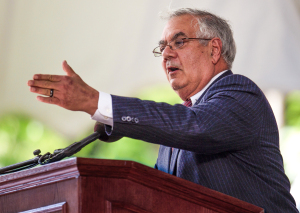
A Journey into Experimental Music of Different Eras
“What might seem the most innocuous music is often the most avant-garde,” writes Ted Gordon on Gunther Schuller’s 1962 oeuvre “Journey into Jazz,” which Chamber Orchestra First Editions (COFE) will perform on Oct. 6 at Lang Concert Hall. Former Congressman and longtime LGBT rights advocate Barney Frank will narrate the piece, a story reminiscent of Peter and the Wolf with an experimental twist: third-stream jazz, or a blend of classical and jazz music. Additionally, NYC-based drummer and composer Gabriel Globus-Hoenich will add a brand-new piece to the COFE program, “Shattered Stones,” which will accompany two of Mozart’s early works, the Piano Concerto No. 21 and Symphony No. 29.
Mozart composed Symphony No. 29 at only 18 years old, while still living in Salzburg, Austria. According to Daniel Underhill Professor Emeritus of Music James Freeman, founder and Musical Director of COFE, Mozart may have paired the intimate feel of the piece with a striking finale in order to convince his father and even himself that he was talented enough to continue his career in Vienna.“It’s unlike any symphony that he had written up until this time,” Freeman said. “To see him suddenly produce a piece like the symphony that we’ll see at the end of the concert is sort of amazing. It just comes out of the blue.”
Both Piano Concerto No. 21, K. 414 and Symphony No. 29 were written in A major, a key that imparts on them a “lyrical, singing quality,” according to Professor Andrew Hauze, who will be featured as soloist on the Concerto. Mozart composed the Concerto just after he had arrived in Vienna at last, eight years after he wrote Symphony No. 29.
But what’s Congressman Barney Frank doing at a Mozart performance? After deciding to feature “Journey into Jazz,” Freeman asked himself, “Who would be an interesting narrator for this piece, a person who would perhaps—I hope—bring a different kind of audience to our concerts, a different kind of audience than has ever come before?”
Frank will also participate alongside Freeman and Hauze in a pre-show discussion at 7:30 P.M. before the 8 P.M. concert. Rehearsals for the show will be open to members of the Swarthmore community.
“I would say all of these pieces [in the COFE program] share a kind of vibrancy and energy, and to have Congressman Frank involved… for one thing, I never imagined that I would be the soloist on a program where he’s also the soloist,” Hauze said.
Freeman feels that this season’s COFE program will provide something to intrigue everyone, from connoisseurs of classical to jazz junkies to all Swarthmore students and staff.
“I just want people to experience recent classical new music, because I think people tend to be a little afraid of it as being too hard for them to understand, but’s it not,” Freeman said. “I hope they’ll hear the Mozart pieces and say, ‘Wow! I didn’t know Mozart was that interesting,’ because I think every note that guy wrote was interesting.”
Bayliss Wagner ’21
Alonzo King Lines Ballet: Biophony and The Propelled Heart
On Thursday, October 5th, Alonzo King Lines Ballet will perform at 8pm in the LPAC Pearson-Hall Theater. The event is free and open to the public.
A dancer has one, overarching goal when he or she steps onto the stage: to make it all look easy. No one wants to go see a ballet or contemporary performance to watch the dancers grimace and express to the audience the difficulty of what they are doing or the amount of pain they are in. The best dancers can make the hardest steps look easy, but it is their hard work and training that makes the choreography look this way. They have to battle the choreography and challenge themselves to give off a certain image.
Alonzo King works differently. The founder and artistic director of Alonzo King Lines ballet, he creates works that adhere to a specific stylistic goal: fluidity. He makes his dancers move in ways that accept and romanticize the human form, rather than breaking it into rigid techniques, as classical ballet does. His dancers barely look solid as they dance, and one is not constantly reminded of how uncomfortable the movements are or how difficult it is for the dancers. This is not to say that his pieces are easy to dance. They are incredibly difficult and require nearly perfect technique. But they are breathtaking because they look so fluid and unrestrained.
His company will be performing Biophony and The Propelled Heart. Biophony is a collaboration between Alonzo King, natural soundscape artist Bernie Krause, and composer Richard Blackford. For years, Krause made recordings of the natural world, from the sounds of killer whales to the gentle hum of the earth itself. The dancers take on animal form to remind us of the beauty that comes with a connection to the natural world.
The Propelled Heart is a celebration of the human voice. The performances is oriented around the vocalist Lisa Fischer, who has shared the stage with Mick Jagger, Beyoncé, Sting, Aretha Franklin, and more. Her voice is astoundingly powerful, and King wished to pay tribute to this. He explores the “kinetics” of the human voice, and his dancers make visual Ms. Fischer’s soaring music.
Gabriel Hearn-Desautels ’20
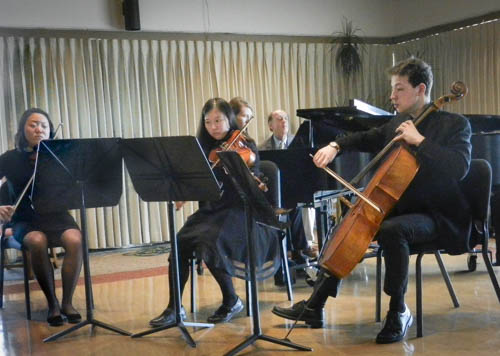
Fetter Chamber Group Gives Back
In 1975, an initial endowment from Elizabeth Pollard Fetter ‘25 began what is now known as the Fetter Chamber Music Program. Elizabeth Pollard Fetter’s husband later added to the endowment, as have successive generations of the family, including children Robert P. Fetter ‘53, Thomas W. Fetter ‘56, and Ellen Fetter Gille. The program has given opportunities for musical exposure and immersion to Swarthmore students, faculty, and community that otherwise would not have existed.
Robert P. Fetter and his wife, who currently live at Broadmead Retirement Community in Cockeysville, MD, recently extended an invitation to the Fetter Program for a Swarthmore chamber music group to perform at Broadmead. On Sunday, April 2nd, four student musicians took the opportunity to play for the Broadmead residents and Fetter family, nine of whom attended the one-hour recital. Jasmine Sun ’18 (violin), Ayaka Yorihiro ’20 (viola), Noah Rosenberg ’18 (cello), and Joshua Mundinger ’18 (piano) performed Passacaglia by Johan Halvorsen for violin and cello, Ballade No. 4, Op. 52 by Frédéric Chopin for solo piano, and Piano Quartet, Op. 60 by Johannes Brahms, which they would later encore at the April 23rd Fetter concert.
The Fetter musicians played passionately and the Broadmead performance was well received by all in attendance. Dr. Michael Johns, coordinator of the Fetter Chamber Music Program, noted the unique gratitude which permeated the recital from both residents and performers. Says Johns, “We were honored by the invitation and opportunity to return the kindness of the family. Swarthmore College students and faculty, past and present, and the community at large have been enriched by the musical communication made possible through the generosity of the Fetter family.”
Maya Kikuchi ’20
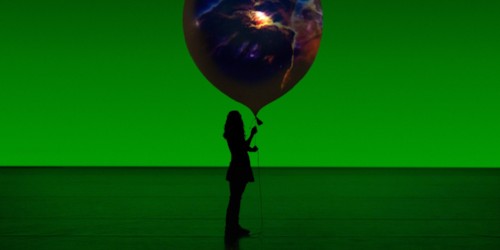
Pig Iron Theatre Company’s A Period of Animate Existence
On September 14th, the Pig Iron Theatre Company will host a semi-staged concert of their newest original work, A Period of Animate Existence. The performance will begin at 7pm in The Lang Performing Arts Center. It is free and open to the public.
Pig Iron Theatre Company describe themselves as an “interdisciplinary ensemble” that is “dedicated to the creation of new and exuberant performance works that defy easy categorization.” Their pieces combine the versatility and originality of performance art with more traditional elements of theater, such as music and dance. They have created more than 30 original works that tackle a range of topics, from sleep, dreams, and consciousness (Shut Eye), to a child’s struggle to accept contingency and fantasy after the Fukushima nuclear disaster (Zero Cost House). While their works do span many different subjects, they all attempt to answer many of life’s difficult questions. A Period of Animate Existence is no exception.
Their newest work offers a meditative examination of life during the Sixth Extinction, a period that will see the death of 20-50% of all life on earth. The company grapples with what lies ahead after such an era, exploring questions of existence and the effects of time. While this may sound abstract, Swarthmore Music Professor Barbara Milewski contends that the work is a “direct attempt to engage audiences with fundamental questions about what it means to be human and what our place is on this planet.” The performance puts children, elders, and machines in dialogue with one another to create what Professor Milewski calls a “multi-generational” exchange, “trying, if you will, to engage conversations among the generations to see how we might all be viewing the same urgent issue of our time.”
Founder/Co-Artistic Director Dan Rothenberg ‘95 collaborated with contemporary composer Troy Herion and set designer/recent MacArthur “Genius” Award winner Mimi Lien to create this new piece. The addition of Herion to the creative team is sure to make A Period of Animate Existenceone of Pig Iron’s most musically inventive works to date. Herion composes in an immense range of musical styles, from classical orchestral compositions to electronic scores that stretch the boundaries of contemporary music. Much of his work focuses on “visual music,” a concept that will merge organically with Pig Iron’s own unique approach to theater. Mr. Herion will be giving a master class on “Visual-Music” at Swarthmore on Tuesday, September 12th, from 4-6pm in the Lang Concert Hall.
Given their dynamism and creativity as an ensemble, the Pig Iron Theatre Company seems uniquely situated to take on these questions. Being an interdisciplinary group gives them the ability to adapt in interesting ways to the work they take on. A Period of Animate Existence is sure to employ new and inventive methods in answering some of the toughest questions that face us today.
Gabriel Hearn-Desautels ’20